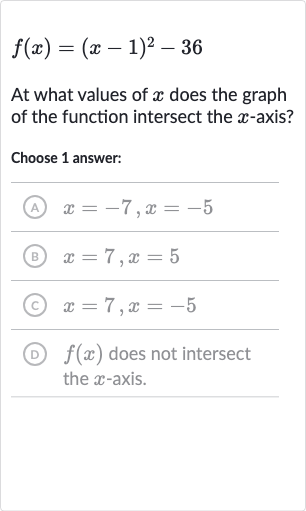Full solution
Q. At what values of does the graph of the function intersect the -axis?Choose answer:(A) (B) (C) (D) does not intersect the -axis.
- Set to : To find the x-intercepts of the graph of the function, we need to set to and solve for .
- Add to both sides: Now we will add to both sides of the equation to isolate the squared term.
- Take square root: Next, we take the square root of both sides of the equation to solve for . Remember that taking the square root of a number yields two solutions, one positive and one negative.
- Solve for x: We will now solve for x by adding to both sides of each equation. and and
- Identify x-intercepts: We have found the two values of where the graph of the function intersects the x-axis. These values are and .
More problems from Domain and range of quadratic functions: equations
QuestionGet tutor help
QuestionGet tutor help
QuestionGet tutor help
QuestionGet tutor help
QuestionGet tutor help
QuestionGet tutor help
QuestionGet tutor help
QuestionGet tutor help

